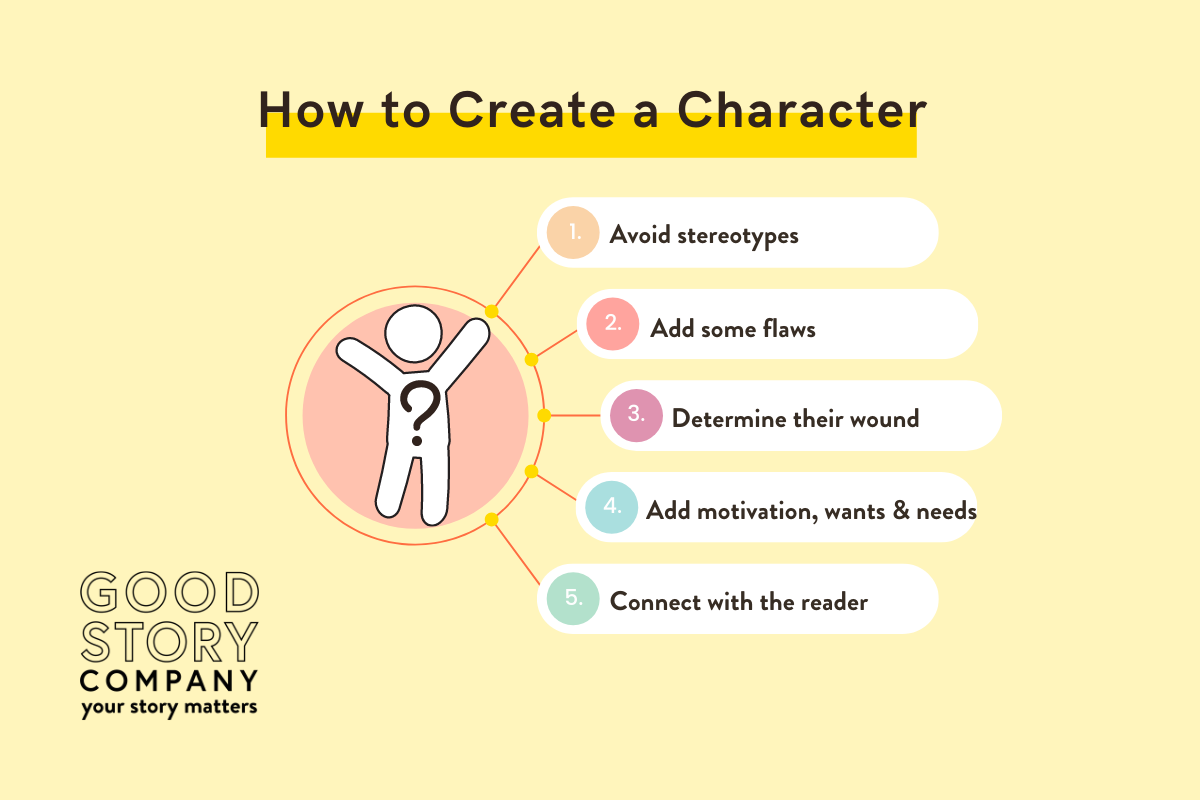How to Create Characters
So often, story ideas begin with characters. Writers have a picture in their mind of a character they’ve never met, or a character that’s an amalgam of people they’ve known, or a character that jumps from something they see in real life, and from there a new story is born. How do we create characters that resonate with readers, though? What needs to go into the mix?
Are you ready to take your story to the next level? Kristen Overman is here to help you! She's an experienced editor with expertise in middle grade and young adult fiction, picture books, adult fiction, and memoir.
How to Create Characters
Avoid Stereotypes
First, avoid stereotypes. In a polarized world, this might seem like a challenge, but consider the people you know well. Very few of them are all one thing or another. Consider characteristics that would be unexpected given who the character is on the surface. Readers make assumptions about characters the same way we jump to conclusions about people we meet briefly, or only know a little bit about. A flat character would be a football player who only talks about football, who watches sports and plays video games. An intriguing character would be a football player who listens to classical music, who maybe practices yoga and has a penchant for mystery novels.
Add some Flaws
Next, remember that all characters are flawed. Nobody is perfect in this world. For your characters to seem real, they shouldn’t be, either. Despite the stories people tell on social media, they have challenges in life they try to keep hidden. What might your character be embarrassed about? How does the image does the character projects contrast with who they really are?
Now determine your character’s Wound
In addition to flaws, strong protagonists also have a wound: something in their past that had a negative impact on them, and affects how they make decisions in the present. The wound could be an experience that informs how they treat others, how well they trust the people in their lives, or how well they trust themselves. The wound should also somehow relate to the story. In a romance, for example, the wound could be the failure of a past relationship, and because of it, the protagonist is unable to fully commit, afraid what might happen if they risk their heart again.
Add in Motivation, wants, and Needs
Once you have some primary characteristics sketched out, think about what the character will face over the course of the story. Determine what motivates your characters. Often what they want at the beginning is indicative of their flaws, and pushes them in the direction of what they need to learn. Now, a flat character will have similar reactions to the obstacles they face time after time, then suddenly realize something near the very end. This literally creates a flat arc … picture a flat line on a heart monitor, with a sudden blip of a pulse, then back to a flat line. Flat lines equal boring characters. Readers want to be kept on their toes, surprised as much by how the character handles situations as by whatever twists and turns the plot introduces.
Make Sure every reaction is a little different
In these scenarios where we see the same reactions in every scene, only to have one major change at the end, when the character’s perspective or world-view changes all at once, chances are we’ve lost interest long before we get there. We need to see a gradual shift that starts to become noticeable around the midpoint of the story and then crystallizes at the climax.
now connect with the reader
Now, how do you create characters we connect to? What’s the difference between a character that sticks with us—the Auggies (Wonder), the Holden Caulfields (Catcher in the Rye), the Katniss Everdeens (The Hunger Games)—and characters that are flat, boring? It’s all in how you write them. If two writers were asked to create a character using Katniss’s known characteristics, the result would likely be two very different characters with similar traits. Physical quirks, pet phrases, and nervous tics are only one part. The rest—the part that makes characters memorable—comes in how we relate to them.
This is the emotional component, the insight we have to how the character thinks and feels that allows us to empathize with them. By seeing how a character thinks, accessing their direct thoughts (even in third-person narratives) we connect, and put ourselves in their shoes. This is how the character becomes like the reader’s avatar in the story. The more access we have, the more we are transported to the character’s world and experience the events of the story firsthand. If we’re consistently told how a character feels, though, by reading named emotions or seeing only physical details (like Auggie laughed, or Auggie cried) the less connection we have.
To recap, create unpredictable characters. Add the unexpected. Give them depth, show them reacting. And the send them on their slow journeys of gradual changes, showcasing their new and improved selves at the end. And leave your readers thinking about them long after they’ve closed the book.
For help creating your unforgettable characters, book Kristen through Good Story Editing! Post contains affiliate links.

